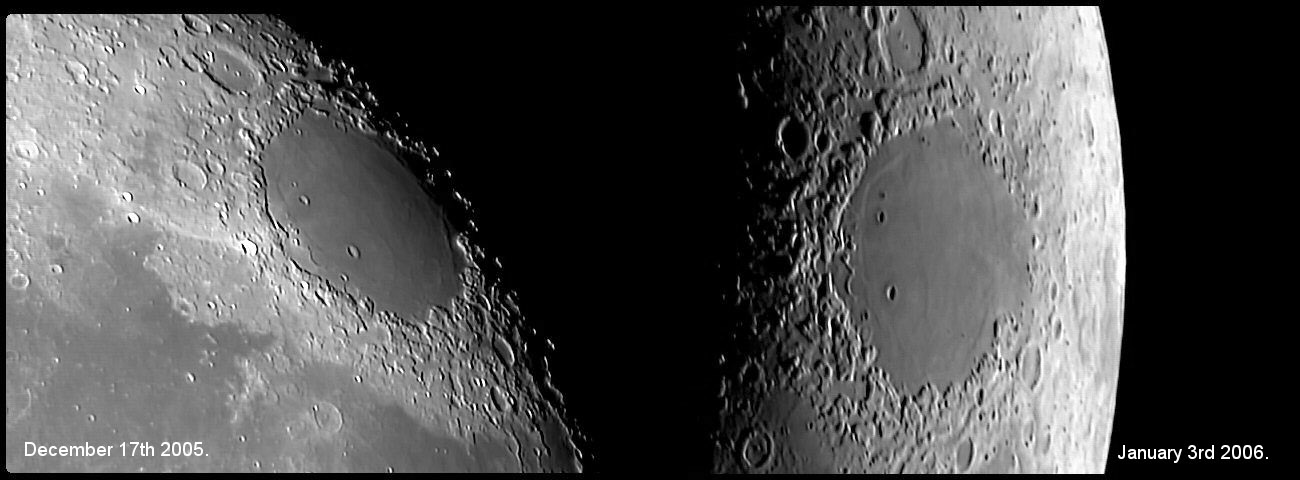images by John C. McConnell, Maghaberry, Northern Ireland
I like Crisium - its the only nearside mare that is totally enclosed, with its basaltic lavas contained within the basin rim. Well, mostly. The far eastern rim is actually breached and lavas connect to Mare Anguis. And I like these images taken with a small telescope because it looks like the Moon when visually observed, and also because I see some new things. Look at Cleomedes - the large flat-floored crater north of Crisium. On the sunrise image (right) there appears to be a shadow-casting line that crosses the western edge of the crater’s floor and continues across its southern rim; the feature is bright - as it should be if its real - on the opposite illumination on the left sunset image. A high resolution, high Sun image doesn’t reveal what the linear feature is, but a lower Sun view suggests that it is a low ridge and hill on the floor. But because of the lighting the very best image of the feature is on John’s image with his little 90 mm Meade. Now look at Taruntius, in the bottom left corner of the January image. Once again the low Sun reveals an unexpected sight: there is a broad inner ridge on both the east and west sides of the crater floor. From higher res, higher Sun views we see that this is the area of concentric ridges and rilles that mark Taruntius as a floor-fractured crater. But the little 90 mm view best shows the elevated terrain. This means that any telescope, big or small, can provide new understanding if we simply look closely enough.
Technical Details:
Left: December 17th 2005, right: January 3rd 2006. Meade ETX 90mm + Philips Toucam Pro 2. The individual images are 300 + frames each processed in Registax and merged in iMerge
Related Links:
Rükl charts 26 & 37
Christmas is coming - consider leaving a list of lunar books on top of a spouse’s pillow - just make sure you include the LPOD URL so that you support LPOD when buying lunar books (or ANY book) from Amazon!
COMMENTS?
Register, and click on the Discussion tab at the top of the page.




